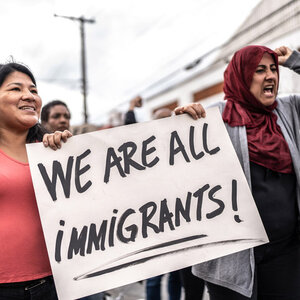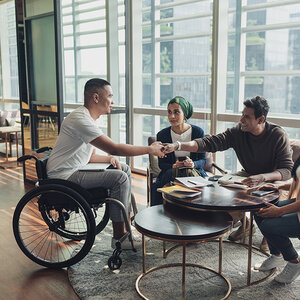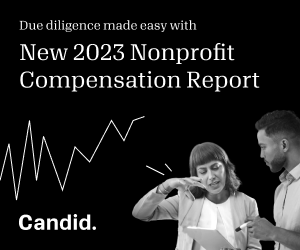To fund anti-ableism solutions, listen to students

I was diagnosed with ADHD and dyslexia in the third grade, but it wasn’t until I misspelled “Wednesday” at my first teaching job that people outside my inner circle knew. One in five Americans have some form of learning disability, yet many still choose to live their lives in the shadows—due to shame and isolation.
As the president of Eye to Eye, a nonprofit that supports individuals with learning disabilities, I find this unacceptable. The stigma that surrounds learning disabilities should not persist in 2022. Having ADHD and dyslexia doesn’t mean you are “difficult” or “lazy.” It means you take in information differently.
Funding for invaluable resources and tools has the potential to chip away at this stigma. In California, Governor Gavin Newsom included $60 million for early childhood dyslexia screening and other advancements for young children in his 2022-23 budget. In the philanthropic world, Charles Schwab, who himself has dyslexia, pledged $20 million in 2019 to an initiative to study dyslexia and other learning disorders.
While it’s fabulous that such leaders are putting the power of government and philanthropy behind research and early screening, the funding must go beyond that goal. Philanthropy must support students who learn differently where they are—so they feel seen, heard, valued, and empowered to build community and act or advocate for what they need to be successful. Right now, the system they are in perpetuates the stigma that forces so many to hide their true selves.
A 2019 study by the National Center for Educational Statistics found that having a disability was one of the more common reasons for bullying in schools. It’s no surprise that ignorance can breed cruelty, and ableism in schools but it doesn’t stop with students. A report from the (NCLD) and Understood.org found that a quarter of U.S. teachers believe that ADD and ADHD diagnoses stem from poor parenting.
We must confront the ableism that permeates all aspects of our society. Philanthropy can move quickly to support that goal while we wait for the government to act on critical funding questions. It can fuel innovation and ignite social change. I know this to be true because I have seen it with my own eyes. But philanthropy can achieve this only if we listen to the most important voices in the room: those of the students themselves.
Eye to Eye connects middle school students who learn differently with similarly abled high school and college students and provides professional development workshops for educators to help them create a more inclusive and supportive learning environment. Through their mentorship experience, students can see with their own eyes that it’s possible to succeed with a learning difference and, ultimately, learn to speak up for their needs in the classroom and beyond. In the fall of 2011, our students came to us with a request: They wanted to take their stories and bring them to lawmakers on Capitol Hill.
This didn’t require millions of dollars from major donors. Instead, we partnered with NCLD and got the money for a bus from a small foundation. At the time, No Child Left Behind was under reauthorization and one revision being considered would have no longer required disabled students to participate in high-stakes testing. This would have sent the wrong message—suggesting that these students were not as capable as others. Students like Jeremy and Isaiah spoke to senators and offered living proof that their disabilities didn’t make them any less capable than their peers.
The leadership these students demonstrated in making their voices heard on Capitol Hill had a tremendous impact. Not only was that provision scrapped from the bill, but Sen. Michael Bennet (D-CO) and his chief of staff both revealed that they had dyslexia—adding more allies and further reducing the stigma surrounding learning disabilities. Since that initial trip in 2011, this has become a yearly tradition, and the results speak for themselves. There is now more of a national conversation around learning disabilities than there ever was prior to 2011, as evidenced by the support from politicians like Gov. Newsom and the Biden Administration’s response to an open letter from our students.
These accomplishments are an example of how quickly philanthropic organizations can move to address constituents’ concerns when they work together and listen. Typically, young people are not engaged in the strategy work for an organization. It’s often people like me sitting across the table from foundation leaders to get funding. When we actively involve students in decisions around their own future, we bring a level of energy and credibility that is hard to capture otherwise.
Other nonprofits like CAST and Understood.org do similarly important work that puts the needs of students at the forefront. If philanthropists want to ensure that their dollars go to good use, they must make sure to fund efforts that tackle the root causes holding back individuals who learn differently. That means giving students like Jeremy and Isaiah a voice, empowering them to confront the stigma and ableism that dominate our educational system.
To truly ignite social change, philanthropy must put the needs of its constituents front and center. From this point on, let’s make sure philanthropy puts the needs and experiences of students at the forefront and voters push elected leaders to lift up all students, regardless of how they learn.
Marcus Soutra is president of Eye to Eye, a national nonprofit that supports individuals who learn differently.
(Photo credit: Eye to Eye)








